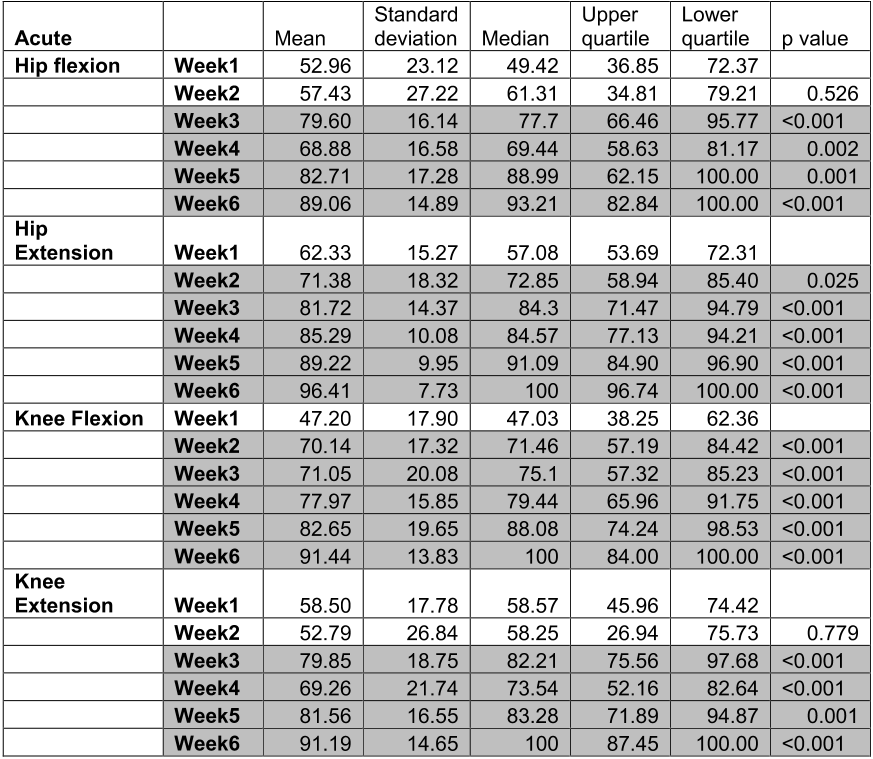




read more











A further option is that in the chronic subjects the threshold level of activity to induce new muscle hypertrophy is elevated compared with that in acute subjects ( i. e. loss of muscle plasticity ) and further research will be required to explain these findings. RAGT, in addition to having the potential to improve the force generating capacity of the lower limb muscles and gait function in responding ISCI subjects has also been reported to have an exercise impact on cardiovascular fitness and so contributes to improvements in the overall health and wellbeing of subjects irrespective of time post injury. This suggests that when designing new pharmaceutical or regenerative treatments careful consideration should be given to the level and intensity of any concomitant rehabilitation programme.
in addition to having the potential to improve the force generating capacity of the lower limb muscles and gait function in responding ISCI subjects has also been reported to have an exercise impact on cardiovascular fitness and so contributes to improvements in the overall health and wellbeing of subjects irrespective of time post injury.
a change in peak torques generated by the lower limb muscles that exceeds the baseline measures, has the potential to be used as an indicator that helps the clinician to decide whether to continue training or to alter the rehabilitation strategy.
For the acute subjects, the functional gains in gait and muscle power are likely to reflect the combination of the natural recovery process post injury (Basso, 2000) supplemented by the impact of the intensive RAGT programme (Dietz, 2008).
Manual muscle testing is an important component of the standard neurological classification of spinal cord injury (ASIA) scoring system.
The peak torque generated as a result of isometric contraction of the muscle was successfully recorded in the hip flexors and extensors and knee flexors and extensors in all subjects.
If the Friedman’s test indicated that there were significant differences in the generated peak torques over the six weeks of training, a Wilcoxon signed rank test was used to identify the between week differences in the generated peak torque.
Use of interventions such as RAGT may offer advantages in such trials as both the dose and intensity of the rehabilitation programme can be easily monitored and standardized and that the integrated dynamometry provides for simple longitudinal collection of a set of important outcome measures.
This degree of muscle atrophy and the related loss of force generating capacity can contribute to functional impairment and can compromise progression of rehabilitation in SCI subjects.
The observation that acute subjects who positively responded to RAGT had significant increase in peak torques within the first 3 weeks of training, suggests that this type of quantitative monitoring could also be considered as a useful marker in identifying subjects who are positively responding to RAGT using BWSTT.
This is likely to be due to the fact that these subacute/chronic subjects were ambulant; therefore a better ambulatory capacity (Figure 2) following ISCI seems to stabilize muscle strength.
In recent years the use of robotic assistance during BWSTT has emerged as an alternative to therapist assisted(Adams et al., 2006; Hicks et al., 2005) or FES assisted BWSTT(Postans et al., 2004) and may provide a more resource efficient method of delivering intensive and progressive gait training (Hornby, Zemon, & Campbell, 2005).